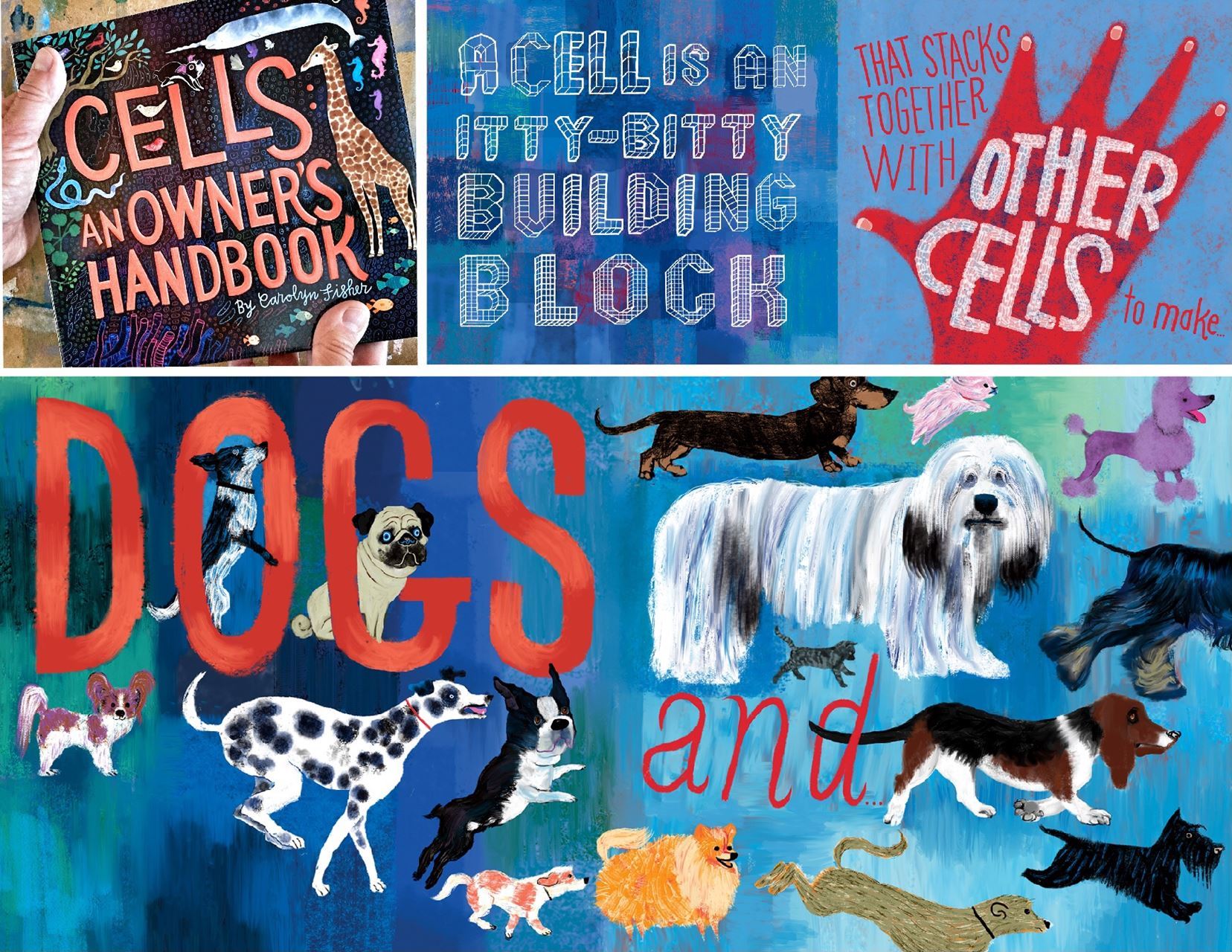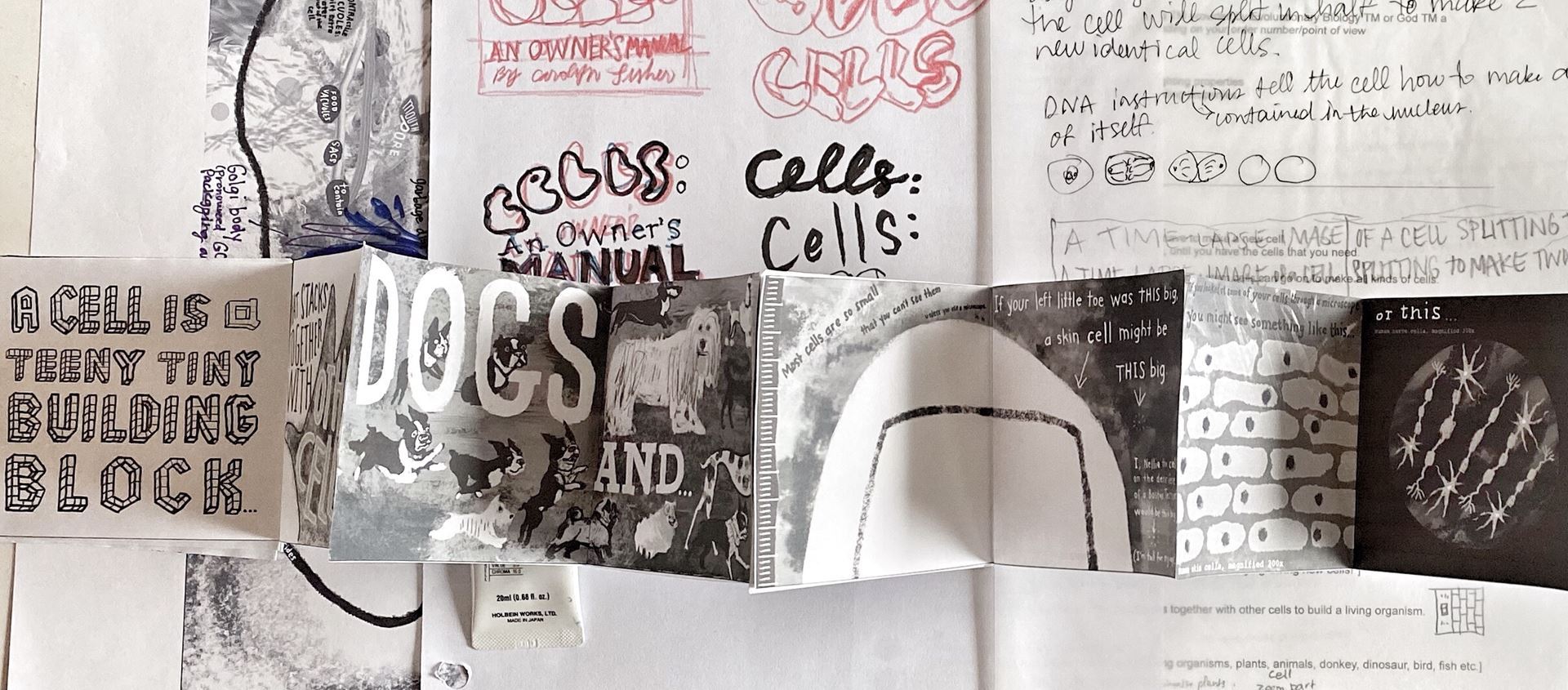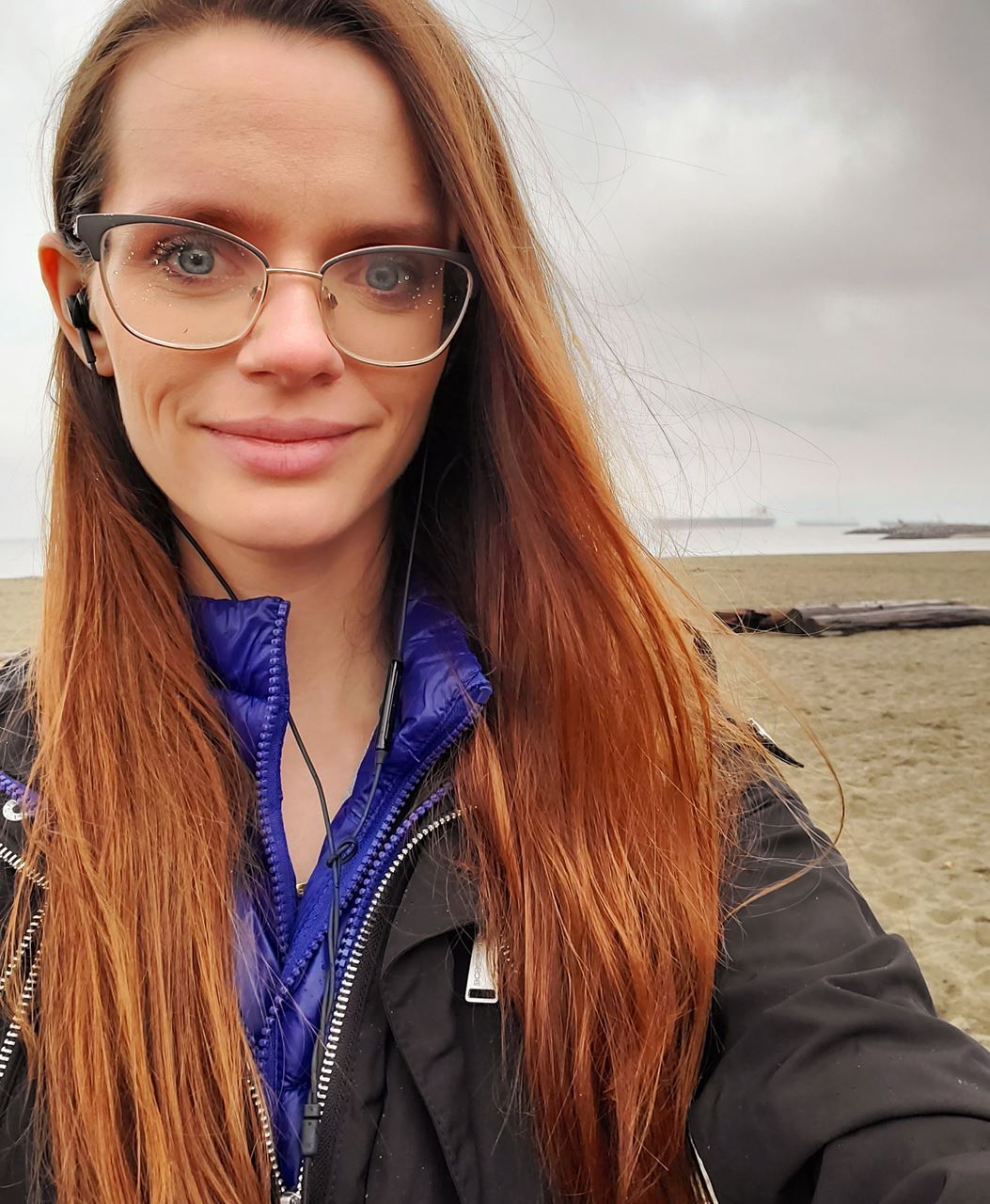
What do you have in common with the derriere of a Boston terrier? No, this isn't a riddle – but a legitimate question. Now before you lose yourself in a dog's breakfast of ideas, I'll give you an answer.
Both this canine booty and our bodies are composed of thousands of cells – the fundamental unit of life. It’s the focus of Carolyn Fisher's SWCC award-winning book, Cells: An Owner's Handbook, where she elucidates the building blocks of man through the eyes of his best friend.
Carolyn joined me via video link from her studio in Calgary to describe her story's evolution from its initial conception to book, a process akin to how a cell biologist painfully polishes their thesis. The relationship between editor and author mirrors that of student and supervisor, and Carolyn explained the story that ended up on paper could be told five ways.
Her first idea was to write about Paramecium, an organism that fascinated her since drawing it out in Grade 10 science class. However, after being encouraged by her editor to generalize the book to "cells" and letting the idea mull for a few years, it evolved into a comical tale about a girl who catches herself a pet rhinovirus or simply put a nasty pet cold. Not yet striking the right chord, her rhinovirus idea evolved to Cells: An Owner's Manual. The second iteration of this novel, narrated by Phoebe the Amoeba, was close to captivating her editor's attention. Still, she cast about for a relatable story that would captivate these hungry young readers.
Frustrated, Carolyn resorted to a tactic employed by writers and young academics alike: scream into her pillow and thrash her limbs on her mattress. Somewhere between that frustration point and putting pen to paper, telling the story of cells from a tiny but captivating narrator living on the derriere of terrier was born.
I asked Carolyn how she translated a fairly abstract concept to a new generation of scientists, something I struggled with when completing my own thesis in molecular biology. She responded with a take of scientific discovery.
"When I have an idea to make a book like this, I am learning the science too," she said
This discovery approach makes the information within her books so tangible to younger audiences. Cells are complicated machines, with many subparts (known as organelles) and hidden mysteries like deoxyribonucleic acid (DNA) that codes every creature's trait. By moving along this journey with her grade school readers, it helped clarify whether complicated structures like the endoplasmic reticulum (the cells transport hub) should be included on a page or whether it was essential to define terms like microscope (it was).

The most awe-inspiring aspect of the picture book is viewing a cell's world through the lens of Carolyn's creative microscope. When asked about her art inspirations, Carolyn lit up.
"I've always just thought things you look at under the microscope are beautiful, and you could have many art shows with the beautiful things you see under a microscope."
The real challenge, though, was to capture the ephemeral beauty of cell parts as seen under a microscope. To translate that translucency and movement on paper involved playing around with different textures and media. Carolyn turned to software such as Photoshop or Procreate along with physical techniques such as glass monoprinting. This is a medium where an image can only be derived once, using tools like ink and a brayer (a small roller). Carolyn painstakingly conducted her own experiments to recreate images of what a biologist would see under their own microscopes.
Like most scientists, both the physical and written portions of Carolyn's creation were created by her own hand, which isn't the case for many children's books that clearly separate the author and illustrator's role. However, the same way a professor fine-tunes the error bars on a graphic in their manuscript, she perfected every last drawing, massaged every last word. This resulted in a unique creative process for her.
"Writing is painful. However, it's just never a straight line," she laughed. "Therefore, I end up bouncing back and forth between writing and illustrating, creating many sketches. Sometimes the writing tells me what the illustration needs, sometimes the illustration tells me what the writing needs. Then sometimes, nothing will tell me what it needs."
So, what about the dog’s butt? Well, this part of the story was a bit less defined in Carolyn’s mind than her dive into cellular anatomy. Although not a huge dog person herself, her mind went on a flight of rhyming fantasy. Once she knew it would be a dog, she made a list of all the breeds that she thought would be fun to draw.
"I had settled on the terrier, and the skies open up, and the music started, and I thought, ‘Oh the derriere of a terrier!’"
From here, things just fell together, and as a writer, you have to know run with inspiration like that.
Carolyn did depart with one vital piece of advice for any adult writer vying to embark on a journey into children's literature.
"If you want to try writing for children the first time, just write."
Proving that like a thesis pen might not always hit paper successfully, but eventually, the stars will align, and that dog's breakfast of creative ideas you had could turn into an SWCC award-winning book.
By: Miranda Stahn

A prairie girl at heart, Miranda completed both her Bachelor's and Master's of Science at the University of Alberta. Her thesis research focused on classifying new bacterial viruses for a unique class of bacteria known as Methanotrophs - named for their ability to survive off of unusual carbon compounds such as methane. Outside of her studies, Miranda has always been passionate about science communications and outreach. Since undergrad, she has been involved in several outreach initiatives run through well-known programs such as the Telus World of Science Edmonton (TWOSE), the University of Alberta's DiscoverE, WISEST (Women in Scholarship Engineering Science and Technology), and Science Slam Canada.
Miranda is committed to making science accessible to everyone and firmly believes that effective and entertaining science writing is key to helping the public disseminate truth from fiction. For more details, please check out her LinkedIn: https://www.linkedin.com/in/miranda-stahn-93229483/
